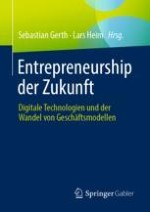2022 | OriginalPaper | Chapter
Open Source Software & AI – Chancen, Risiken, Synergien und Geschäftsmodelle
Authors : Anselm W. Hahn, Maximilian V. Reimer, Simon Hahn
Published in: Entrepreneurship der Zukunft
Publisher: Springer Fachmedien Wiesbaden
Activate our intelligent search to find suitable subject content or patents.
Select sections of text to find matching patents with Artificial Intelligence. powered by
Select sections of text to find additional relevant content using AI-assisted search. powered by
